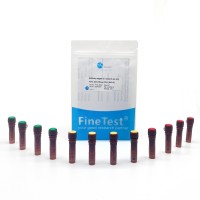The standard assay for monitoring anticoagulation during extracorporeal life support (ECLS) is the activated clotting time (ACT) test, with celite, kaolin, and glass beads being the most commonly used activators to initiate contact activation. The point-of-care ACT test has been the preferred test in catheterization labs and cardiac theatres because it has a number of advantages over laboratory tests (Spinler et al., Ann Pharmacother 39(7–8):1275–1285, 2005):
|
– |
Shorter time between sampling and results.
|
|
– |
Smaller blood sample size.
|
|
– |
Availability to have test performed by non-lab personnel.
|
|
– |
Reduced errors associated with sample mislabeling/mishandling.
|
|
– |
Decreased risk of sample degradation with time.
|
There are other coagulation monitoring tests available; however these are usually specific and do not take into account the global picture of the entire clotting system. The standard coagulation tests (prothrombin time (PT), activated partial thromboplastin time, thrombin time (TT), and fibrinogen level) are plasma tests measuring plasma haemostasis and not patient haemostasis. The ACT measurement uses whole blood, thereby incorporating the importance of platelets and phospholipids in the role of coagulation. Many of the problems with the haemostatic system during ECLS are caused by the activation of platelets, which are not detected by standard tests.
Because an ACT test is nonspecific there are many variables such as hypothermia, platelets, aprotinin, GP IIb/IIIa antagonists, haemodilution, etc. that can alter its results. For this reason it is important to gain an understanding as to how these variables interact for meaningful interpretation of the ACT test result.





![ENOX1/ENOX1蛋白Recombinant Human Ecto-NOX disulfide-thiol exchanger 1 (ENOX1)重组蛋白Candidate growth-related and time keeping constitutive hydroquinone [NADH] oxidase蛋白](https://img1.dxycdn.com/p/s14/2024/0914/386/8235194321829384381.jpg!wh200)



